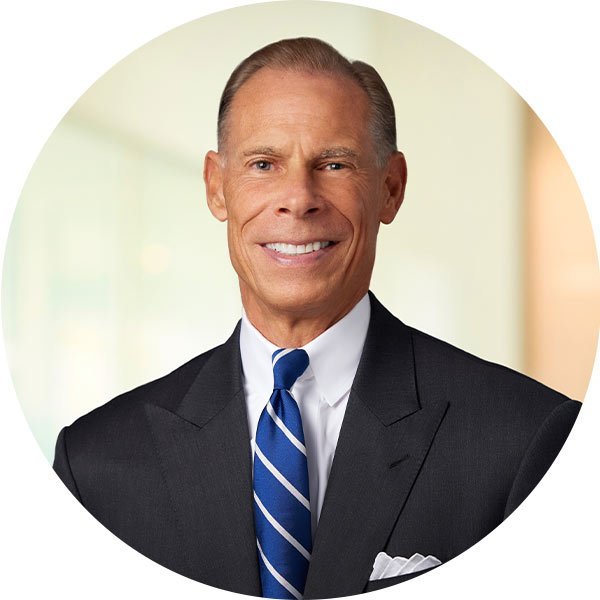George Hosfield, CFA
Chief Investment Officer
Director
With the S&P 500 tumbling 18% in April from its February high, and subsequently rallying back to an all-time high, the second quarter was a wild rollercoaster for investors. In typical reactionary fashion, at the market trough in April, the perceived likelihood of a recession soared to 65% from just 20% in January. Despite this, none of the underlying economic fundamentals materially changed. Rather, it was an emotionally driven reaction. Following the market, recession probability fell back to 20% by quarter end. Please see the piece titled “Turn Down the Volume” in last quarter’s Outlook publication for a timely reminder to not fall prey to such market volatility.
Speaking of emotions, as the title of this quarter’s piece alludes, there continues to be a significant disconnect between how consumers feel and how they behave. To illustrate this point, while measures of consumer confidence have never returned to their pre-COVID levels, consumer spending—the engine of the U.S. economy—has continued its climb to highs historically incongruent with such subdued levels of consumer sentiment. For more on this dichotomy, please see “Retail Therapy” that immediately follows this article. Of course, the primary reason for robust consumer spending has been a resilient labor market. With unemployment standing at 4.2%, wage growth of 3.9% and with as many job openings as there are people looking for work, this is somewhat of a “Goldilocks” situation. Unemployment is low, and yet, there is enough slack to keep wage pressures from stoking inflation.
With the S&P 500 finishing up 11% on the quarter, and at an all-time high, it appears investors have concluded the tariff fog is starting to clear. While tariff rates are expected to be higher than they were at the beginning of the year, the current thinking is that tariffs will ultimately settle around 12%, an economically manageable level. Investors now can focus on market fundamentals … which remain healthy. Specifically, corporate earnings are forecasted to grow in high single digits in 2025. While stocks aren’t cheap, we are reaffirming our expectation for a stock return less than earnings growth, which we may have already already experienced for the year.
With no interest rate moves year-to-date by the Federal Reserve and a 10-year Treasury yield that remained rangebound within 0.5%, bonds have performed quite well. Specifically, the Aggregate Index is now up over 4% through six months, and bonds served quite well as a ballast in balanced portfolios when equities faltered in April. Looking ahead to the second half of the year for the bond market, the major question is not when but if the Federal Reserve will want, or need, to cut rates. Investors have spent much of the last several months waiting for the proverbial hammer to drop regarding any effects from tariffs on either inflation or the labor market. So far, any impact has been minimal.
Federal Reserve Chair Jerome Powell is comfortable holding rates steady until either uncertainty from new tariff policy subsides, or any notable weakening to the labor market occurs. Our outlook remains for no more than two rate cuts by year end ... and we wouldn’t be surprised if there were none.
Geopolitical risks have clearly risen in the aftermath of Israeli and U.S. strikes targeting Iran’s nuclear program. To date, the geopolitical fallout has been surprisingly minimal. Economically, the primary risk is a spike in energy prices.
However, the impact on inflation and global GDP should be limited as most of the world has very limited trade exposure (apart from oil) to Iran, Israel and the Middle East more broadly. For investors already grappling with policy uncertainty, elevated tensions in the Middle East add an extra layer of complexity. In this time of increased anxiety, investors must be diligent to stay true to their long-term investment plans.



